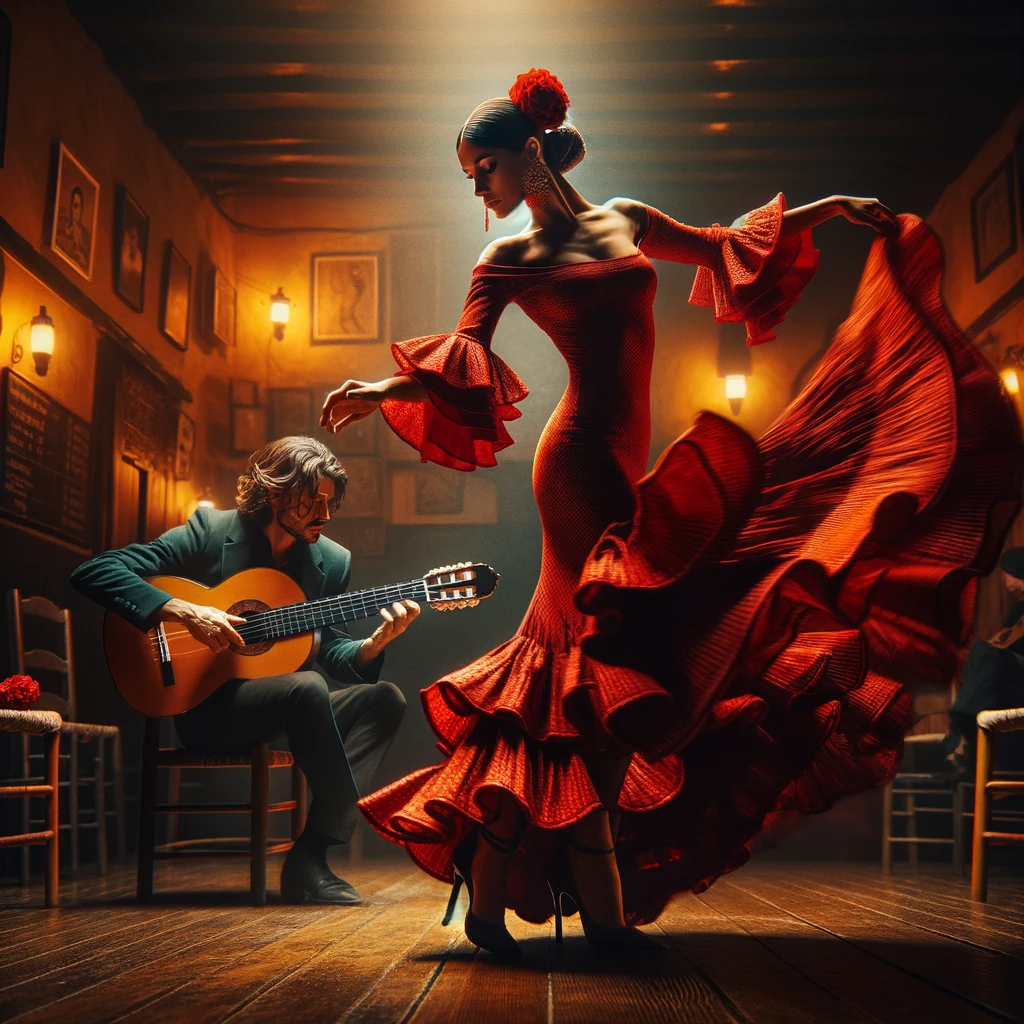The Heartbeat of Flamenco: Understanding the Art and Passion of Andalusia, Spain.
The Heartbeat of Flamenco: Understanding the Art and Passion of Andalusia, Spain.

Andalusia, the sun-soaked region in southern Spain, is synonymous with vibrant culture, rich history, and above all, flamenco—an art form that embodies the soul, passion, and resilience of its people. From the rhythmic clapping to the haunting guitar melodies and the fiery dance steps, flamenco is much more than a performance; it is a profound expression of life itself.
In this blog, we explore the origins, elements, and cultural significance of flamenco, as well as how visitors can immerse themselves in this captivating tradition when visiting Andalusia.
Origins of Flamenco: A Blend of Cultures and Histories
Flamenco’s roots are as complex and layered as the rhythms that define it. Emerging from the cultural crossroads of Andalusia, flamenco reflects the influences of:
- Gypsy (Roma) heritage: The Roma people brought a deep emotional intensity and storytelling tradition.
- Moorish music: Centuries of Islamic rule infused melodic scales and rhythmic complexity.
- Jewish and Christian traditions: These added sacred and secular dimensions, enriching flamenco’s diversity.
While its precise origins are debated, flamenco crystallized in the 18th and 19th centuries as a voice of marginalized communities—an art form born of struggle, celebration, and identity.
The Core Elements of Flamenco
Flamenco is not just dance or music; it is a fusion of several artistic components:
1. Cante (Song)
The soul of flamenco lies in the cante. It conveys intense emotions—from sorrow and longing (known as cante jondo) to joy and celebration. The singer’s voice is raw and powerful, often telling stories of love, loss, or social injustice.
2. Toque (Guitar Playing)
The flamenco guitar provides the rhythmic and melodic foundation. Guitarists use intricate fingerpicking techniques and percussive tapping to accompany the singer and dancer. The guitar’s sound is both haunting and invigorating, guiding the entire performance.
3. Baile (Dance)
Flamenco dance is characterized by expressive movements, including:
- Powerful foot stomping (zapateado)
- Elegant hand and arm gestures (braceo)
- Intense facial expressions
The dancer interprets the music and lyrics, creating a dialogue with the singer and guitarist in an electrifying display of passion.
4. Palmas (Hand Clapping) and Jaleo (Calls)
These elements provide rhythmic accompaniment and encouragement, often performed by other participants or the audience, adding to the communal spirit of flamenco.
Experiencing Flamenco in Andalusia: Where to Go
Flamenco thrives across Andalusia, but some cities stand out as its beating heart:
Seville
Known as the flamenco capital, Seville offers countless tablaos—intimate venues where traditional flamenco is performed nightly. Neighborhoods like Triana are famed for their deep flamenco roots.
Granada
Home to the Sacromonte caves, where Gypsy families preserved flamenco traditions, Granada offers unique performances in atmospheric cave settings.
Jerez de la Frontera
Considered the birthplace of flamenco’s cante jondo, Jerez hosts the annual Festival de Jerez, attracting artists worldwide.
Cádiz and Córdoba
These cities combine rich history with vibrant flamenco scenes and festivals, providing diverse opportunities to witness the art form.
Learning Flamenco: Workshops and Classes
For those who want to engage more deeply, Andalusia offers numerous workshops where visitors can learn flamenco basics—dance steps, guitar rhythms, or singing techniques. Participating in these classes offers insight into the discipline and emotion behind the art and connects travelers with locals passionate about preserving their heritage.
Flamenco’s Cultural Significance Today
Flamenco is not just a tourist spectacle; it remains a vital cultural expression in Andalusia, embodying themes of identity, resistance, and community.
- UNESCO Recognition: In 2010, flamenco was declared an Intangible Cultural Heritage of Humanity, highlighting its global importance.
- Contemporary Flamenco: While rooted in tradition, flamenco evolves as modern artists blend it with jazz, pop, and other styles, expanding its reach without losing its essence.
- Social Fabric: Flamenco continues to play a role in festivals, family celebrations, and local rituals, reinforcing Andalusia’s collective identity.
Tips for Enjoying Flamenco Respectfully
To truly appreciate flamenco’s depth and respect its origins, consider the following:
- Choose authentic venues: Seek out traditional tablaos or community shows over tourist-focused performances.
- Arrive early: Flamenco shows often have a quiet buildup; arriving early lets you soak in the atmosphere.
- Engage respectfully: Photography may be restricted; avoid disrupting performers.
- Learn the basics: Understanding the structure of flamenco—its different palos (styles) and rhythms—enhances appreciation.
Conclusion: Feeling the Flamenco Pulse
Flamenco is more than a dance or music style—it is Andalusia’s heartbeat, a living testament to its history, emotions, and spirit. Experiencing flamenco in its birthplace is an invitation to connect with a culture that celebrates life’s joys and sorrows through an extraordinary art form.
Whether watching a fiery dance in Seville’s narrow streets, listening to soulful singing echoing from a Granada cave, or strumming a few chords in a local workshop, flamenco offers a profound journey into the passion and resilience of Andalusia.
So, when you travel south to Spain, let flamenco move you—not just as a spectacle, but as an unforgettable encounter with the soul of a region.


